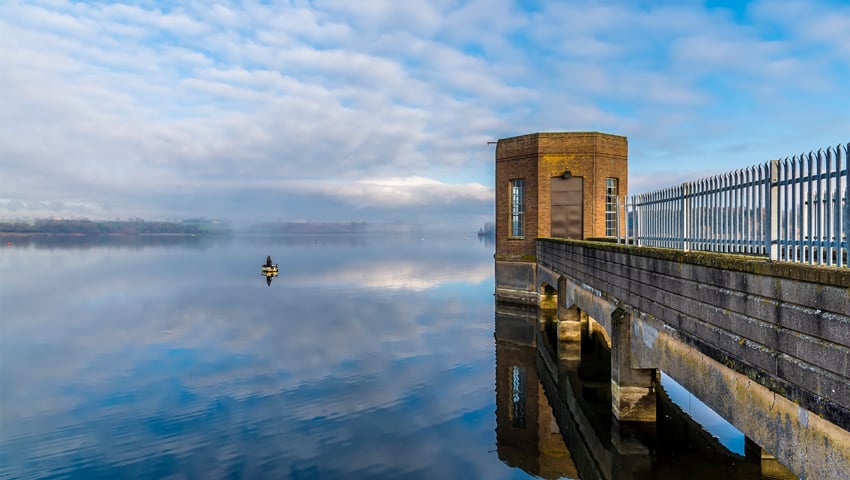Environment Secretary Steve Reed has fast-tracked the development of two major new reservoirs in Lincolnshire and Cambridgeshire. Overall the government plans to fast-track delivery of nine new reservoirs, supporting its plans to deliver 1.5 million new homes by the end of this parliament.
The Rivers Trust, however, responded that while large reservoirs may well be part of the solution for the long term, the country needs action now to change how the water we have is used, and how farmers and landowners manage rainwater as it falls.
The government says that it will build two new reservoirs, one in East Anglia and the other in Lincolnshire. These projects have been awarded status of ‘nationally significant’, which means the project is so crucial that the planning process is escalated from a local level to the Secretary of State.
Long-term delivery
This milestone is intended to streamline and accelerate the planning process, and to shore up water resources for over three quarters of a million homes in England’s most water-stressed areas.
Defra says that rapid population growth, crumbling infrastructure that has been left to decline, and a warming climate mean the UK could run out of clean drinking water by the middle of the next decade without a major infrastructure overhaul.
To sustain Britain’s water supply into the future, the government will also legislate to radically streamline the planning process – meaning the ‘nationally significant’ designation is automatic for projects like these which are fundamental to our national water resilience.
David Black, Chief Executive of Ofwat, said, “We welcome the clear focus the government is placing upon accelerating the delivery of supply and resilience schemes that will meet our future water needs and support economic growth. Alongside the £2 billion of development funding announced at our 2024 Price Review, this will help us to deliver the largest programme of major water infrastructure projects – including nine new reservoirs – seen in decades.”
664 million cups of tea
Anglian Water are proposing to build the Lincolnshire Reservoir to the south of Sleaford, aiming to be operational by 2040. They have also partnered with Cambridge Water to propose the Fens Reservoir, located between the towns of Chatteris and March, set to be completed in 2036.
The Lincolnshire Reservoir would provide up to 166 million litres of water per day for up to 500,000 homes – that is the equivalent of more than 664 million cups of tea day. The Fens would supply a much needed 87 million litres to 250,000 homes in the driest region of the UK.
Both projects will now progress to consultation phase, where developers gather views from communities and stakeholders.
Soil health and grey water
Mark Lloyd, Chief Executive at The Rivers Trust, said, “With drought predictions for the summer getting ever more dire and reservoirs a long way down the planning line, we need to look at pressure on our water supplies more strategically. Large reservoirs may well be part of the solution for the long term, but we need action now on how we use the water we have and how we manage rainwater as it falls.
“Step one: manage the rain where it falls – hold the water in the landscape by improving soil health and restoring our river corridors and providing green spaces in towns so the water fills our underground reservoirs.
“Step two: reduce demand – we are one of the most water thirsty nations in Europe consuming 150 litres per person per day compared to Denmark’s 98 litres. We can achieve this with water efficient homes, grey and rainwater reuse – we don’t need drinking standard water to wash our cars, flush our loos, wash our dogs or water the garden. And strategically, do we need to put ever more housing and demand into the most water stressed parts of our country? The south and east are home to our most vulnerable rivers, chalk streams which are dying as a result of water abstraction for our homes and agriculture.
“Step three: our food supply is even thirstier than we are; roughly 70 per cent of all freshwater abstraction goes to agriculture. We would like to see smaller on-farm reservoirs to store rainwater, which can be built quicker, serve other functions, and have less of an impact on the atmosphere and the environment.
“The government must tackle the threat of water scarcity holistically alongside flooding and water quality. That is the only way its ambitious agenda for water and the environment can ever be realised.”
